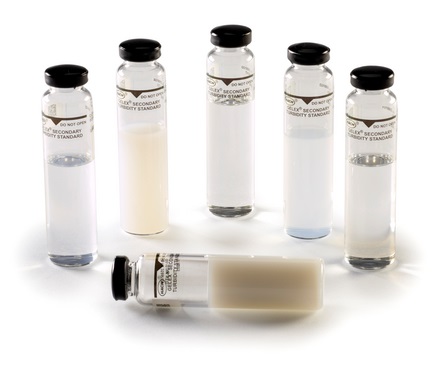HSO技術知識庫>可以用測量濁度來代替測量懸浮固體嗎?
Document ID : TE412
Published Date : 01/09/2020
Source : Hach-UK HSO
Published Date : 01/09/2020
Source : Hach-UK HSO
Question
Can turbidity be measured in place of suspended solids?
Can turbidity be measured in place of suspended solids?
Summary
Measuring turbidity in place of suspended solids
Measuring turbidity in place of suspended solids
Answer
Although suspended solids will cause turbidity, a turbidity measurement is not the same as a measurement of suspended solids. A suspended solids measurement, as defined by the USEPA, determines the amount of solids in a sample by weight, where a turbidity measurement shows how the suspended solids scatter light. When the particulate makeup of the sample changes, the light scattering characteristics of the sample may change in an unpredictable way. If the particulate makeup of the sample is known to be consistent over time, it may be possible to use turbidity measurements to estimate the level of suspended solids. This would require making a calibration curve of suspended solids (determined gravimetrically) vs. measured turbidity values (NTU) for a series of samples with varying levels of suspended solids. Even in these cases, many samples do not exhibit a linear relationship between ppm suspended solids and turbidity value. This can be caused by interferences such as color, particle shape, distribution, and absorption. For example, a natural sample showing a turbidity of 500 NTU often shows a turbidity of substantially more than 100 when diluted 5-to-1 with distilled water.

儘管懸浮固體會引起渾濁,但濁度的測量方法與懸浮固體的測量方法不同。根據USEPA的規定,懸浮固體的測量可以確定水樣中固體物的重量,而濁度的測量顯示懸浮固體如何散射光。當水樣的微粒組成改變時,水樣的光散射特性可能以不可預測的方式改變。如果已知水樣的微粒組成隨著時間變化是一致的,則可能可以使用濁度測量來估算懸浮固體的含量。對於懸浮固體含量不同的一系列水樣,將會需要繪製懸浮固體(透過重量測定)與測得濁度值(NTU)的校正曲線。即使在這些情況下,許多水樣在ppm懸浮固體和濁度值之間也沒有表現出線性關係。這可能是由於顏色、顆粒形狀、分佈和吸收等干擾因素而引起。例如,當用蒸餾水以5比1稀釋濁度為500 NTU的自然水樣時,通常顯示出實質上大於100的濁度。
Although suspended solids will cause turbidity, a turbidity measurement is not the same as a measurement of suspended solids. A suspended solids measurement, as defined by the USEPA, determines the amount of solids in a sample by weight, where a turbidity measurement shows how the suspended solids scatter light. When the particulate makeup of the sample changes, the light scattering characteristics of the sample may change in an unpredictable way. If the particulate makeup of the sample is known to be consistent over time, it may be possible to use turbidity measurements to estimate the level of suspended solids. This would require making a calibration curve of suspended solids (determined gravimetrically) vs. measured turbidity values (NTU) for a series of samples with varying levels of suspended solids. Even in these cases, many samples do not exhibit a linear relationship between ppm suspended solids and turbidity value. This can be caused by interferences such as color, particle shape, distribution, and absorption. For example, a natural sample showing a turbidity of 500 NTU often shows a turbidity of substantially more than 100 when diluted 5-to-1 with distilled water.

儘管懸浮固體會引起渾濁,但濁度的測量方法與懸浮固體的測量方法不同。根據USEPA的規定,懸浮固體的測量可以確定水樣中固體物的重量,而濁度的測量顯示懸浮固體如何散射光。當水樣的微粒組成改變時,水樣的光散射特性可能以不可預測的方式改變。如果已知水樣的微粒組成隨著時間變化是一致的,則可能可以使用濁度測量來估算懸浮固體的含量。對於懸浮固體含量不同的一系列水樣,將會需要繪製懸浮固體(透過重量測定)與測得濁度值(NTU)的校正曲線。即使在這些情況下,許多水樣在ppm懸浮固體和濁度值之間也沒有表現出線性關係。這可能是由於顏色、顆粒形狀、分佈和吸收等干擾因素而引起。例如,當用蒸餾水以5比1稀釋濁度為500 NTU的自然水樣時,通常顯示出實質上大於100的濁度。
